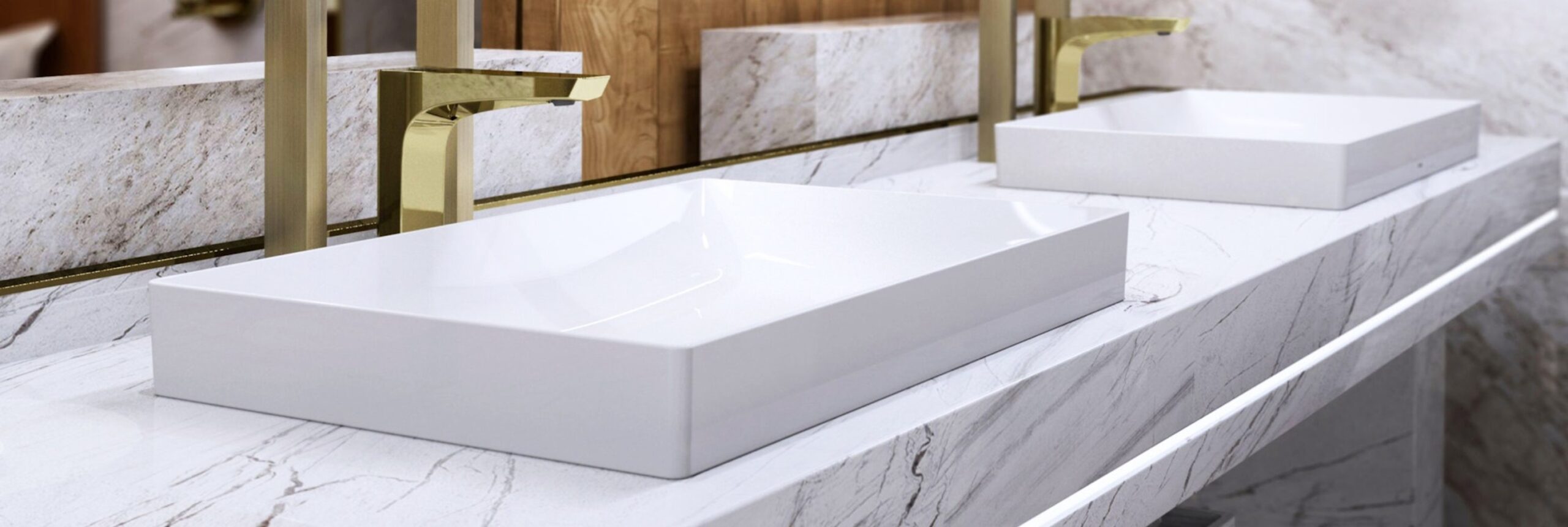
As we step into 2024, interior designers are adapting to a dynamic set of trends that are reshaping the approach to commercial restroom design. These trends reflect a comprehensive understanding of user needs, combining elements of aesthetics, functionality, hygiene, and inclusivity to elevate the overall guest experience.
Hygiene-Centric Design
The ongoing emphasis on hygiene, particularly in the wake of global events, has become a central theme in commercial restroom design. Designers are incorporating touchless technologies and antimicrobial surfaces to minimize physical contact points. Automatic faucets, sensor-operated soap dispensers, and hands-free dryers contribute to a more sanitary environment, enhancing both safety and user comfort.









Spatial Efficiency and Flexibility
Space planning in commercial restrooms is evolving towards efficiency and adaptability. Designers are exploring layouts that optimize available space, ensuring functionality without compromising aesthetics. Additionally, flexible design elements allow for easy reconfiguration to accommodate varying capacities and user needs over time.

Inclusive Design for Accessibility
The push for greater inclusivity is influencing restroom design, with a focus on ensuring accessibility for users of all abilities. Designers are incorporating features such as accessible stalls, properly positioned grab bars, and spacious layouts to accommodate wheelchair users. Attention is also given to visual and tactile cues for those with visual impairments, fostering a restroom environment that is universally accessible.

Sustainable and Eco-Friendly Practices
Sustainability continues to be a driving force in interior design, extending to commercial restrooms. Designers are opting for environmentally friendly materials, energy-efficient fixtures, and water-saving technologies. The integration of sustainable practices not only aligns with global conservation efforts but also caters to the growing demand for eco-conscious design solutions.

Technology Integration
The integration of technology is transforming the restroom experience. High-tech mirrors with integrated displays, smart lighting systems, and even virtual reality elements are finding their way into commercial restroom designs. These technological enhancements not only add a futuristic touch but also contribute to user engagement and satisfaction.

Biophilic Elements
Biophilic design principles, emphasizing a connection to nature, are increasingly influencing commercial restroom aesthetics. Incorporating natural elements, such as living green walls, natural materials, and ample natural light, creates a more inviting and visually pleasing environment. This approach contributes to the well-being and comfort of restroom users.

Gender-Neutral and All-Gender Restrooms:
The move towards gender inclusivity is prompting the design of gender-neutral or all-gender restrooms. Designers are reimagining traditional restroom layouts to create spaces that are welcoming and inclusive for individuals of all gender identities. This trend reflects a broader societal shift towards recognizing and accommodating diverse needs.
Artistic and Unique Designs:
Restrooms are no longer purely functional spaces; they are becoming opportunities for artistic expression. Interior designers are incorporating unique and visually striking elements, from vibrant tile patterns to custom-designed fixtures, to create memorable and aesthetically pleasing restroom environments.
Smart Maintenance Solutions:
The incorporation of smart maintenance solutions is streamlining facility management. Designers are exploring features such as predictive maintenance sensors that alert staff to potential issues, reducing downtime and ensuring a consistently well-maintained restroom space.
In conclusion, the trends influencing commercial restroom design in 2024 and beyond reflect a holistic approach that goes beyond aesthetics. Interior designers are responding to evolving user expectations, integrating technology, prioritizing hygiene, embracing inclusivity, and fostering sustainability. These trends collectively contribute to an enhanced guest experience, making commercial restrooms more functional, aesthetically pleasing, and attuned to the evolving needs of diverse user groups.



